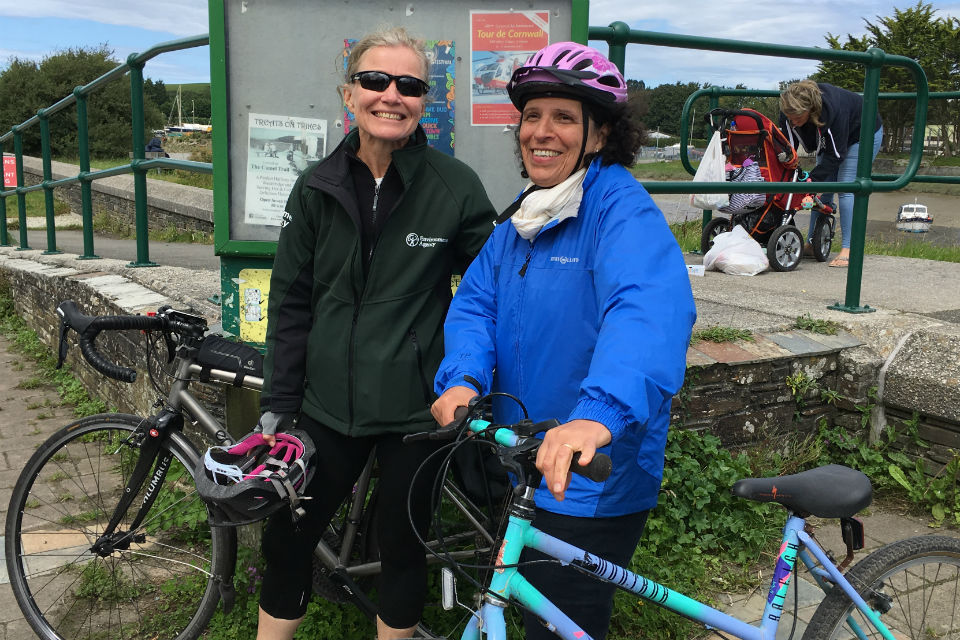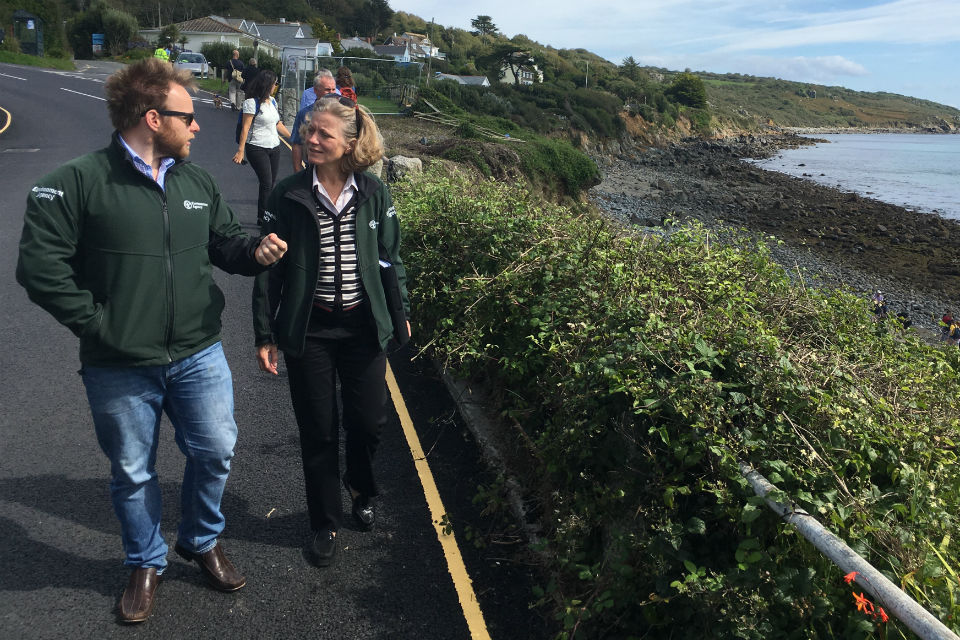News story: Environment Agency chair visits Grogley and Coverack
Emma Howard Boyd met residents of Coverack to see the progress of recovery work 3 weeks after flash flooding hit the Cornish village.
The chair of the Environment Agency spent 2 days in Cornwall, where she also visited a project to boost fish numbers.
On Wednesday 9 August Emma travelled by bike using the Camel trail to Grogley, where she was shown the Water for Growth project – a £2.2 million project to restore freshwater fish habitats to the Camel and Fowey rivers.
The project is a partnership with the Environment Agency, Westcountry Rivers Trust, Natural England and South West Water to remove obstructions to fish migration, making it easier for salmon and trout to spawn in Cornwall. The river restoration project will create an improved environment for people and wildlife while adding value for local businesses that depend on sustainable fisheries. The Camel trail itself is a very popular tourist destination all year round providing an important contribution to the local economy.
During the trip Emma met a staff member inspired to learn to cycle by her visit. Gitty Ankers is an Environment Agency catchment co-ordinator who has worked on the project since its inception in 2015 and was very pleased the chair would be visiting.

But when Gitty learned Emma was a keen cyclist and would be making the trip by bicycle, a cultural barrier from Gitty’s childhood threatened to spoil the visit.
Gitty said:
My parents wanted me out of Iran during the revolution in 1979, so I came over to the UK to do my master’s degree. But in my native country they don’t teach girls two things: swimming and cycling. And those two things have been on my wish list ever since.
When area director Richard Stockdale said Emma Howard Boyd wanted to come and look at Grogley, I was so pleased as I had really worked hard on this project. But when he said it would be part of a cycling trip my heart sank. I thought it would be too difficult to keep up with everyone. So I gave myself a week to learn to cycle.
Borrowing a colleague’s bicycle, bought for his daughter 5 years ago for £5, Gitty began to learn, which is not without its own unique difficulty in hilly Cornwall.
Gitty said:
Learning to cycle is the scariest thing I have ever done. The worst is the speed coming downhill. And finding somewhere flat in Cornwall is challenging. But I found a quiet residential street and every morning I would go up and down that road. Since then I have cycled from Bodmin to Grogley and from Grogley to Wadebridge and back. That’s 7 miles each way.
If I don’t learn to cycle now, then there will be no other opportunities. You always need someone to inspire you to do something, no matter how old you are.
Gitty’s next goal is to learn to swim. Emma and Gitty have committed to swimming together next year so watch this space.
On Thursday 10 August Emma Howard Boyd visited Coverack to see how the village has recovered since flash flooding.

Cornwall Council declared a major incident at 5.40pm on 18 July when flash flooding affected about 50 properties in Coverack. More than 105mm of rainfall fell within 3 hours. The recovery effort saw Environment Agency staff:
- transport 100 tons of silt from a river bed and take it 50m upstream
- remove 50 tons of debris from the beach
- dispose of 40 tons of green waste blocking watercourses
- remove 30 tons of silt, fallen trees and other blockages
- clear blockages from culverts
One of these culverts threatened to flood the home next door. Environment Agency staff cleared the watercourse that flowed within yards of the kitchen window and dug family possessions out of the silt by hand.